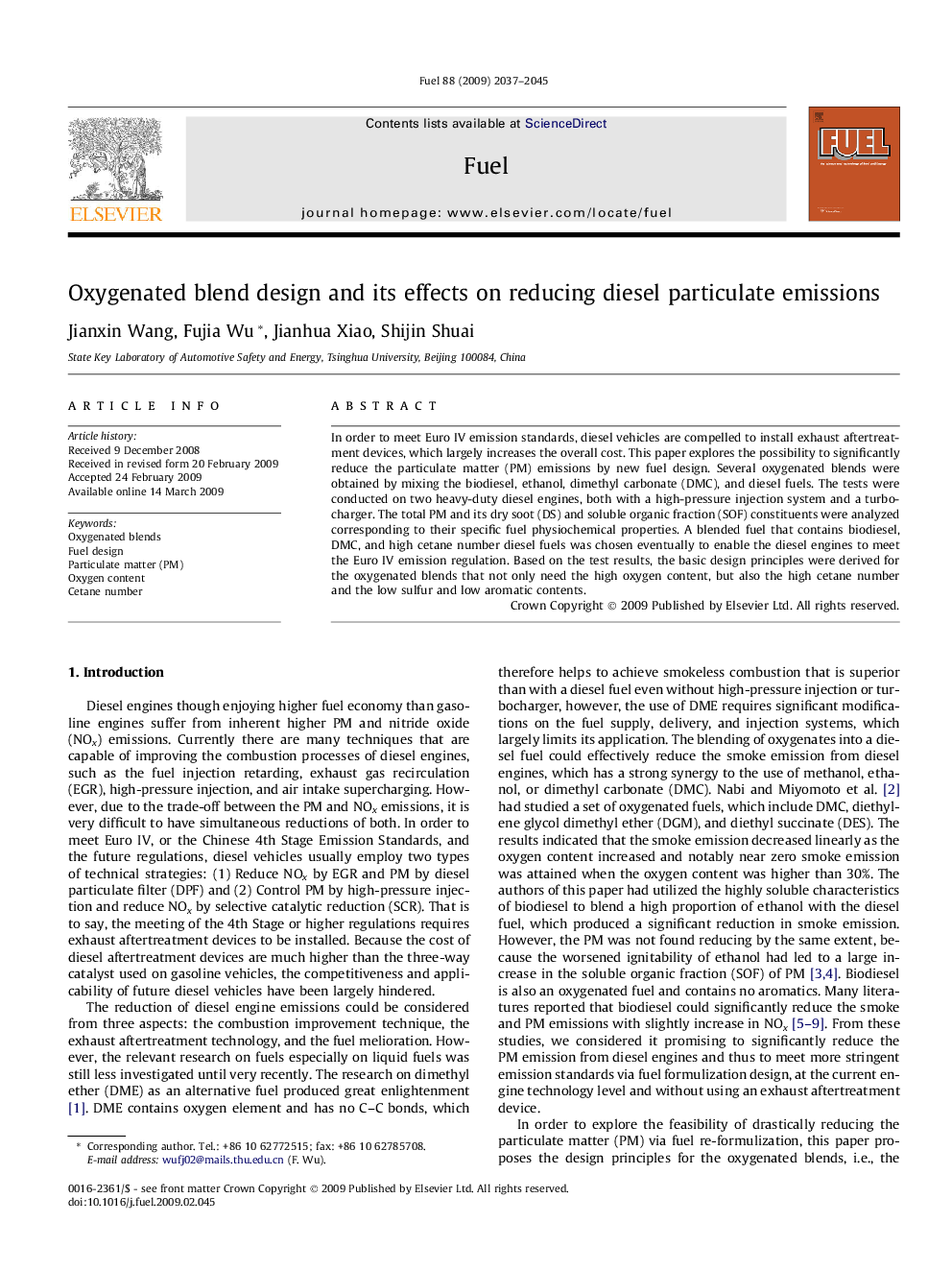| Article ID | Journal | Published Year | Pages | File Type |
|---|---|---|---|---|
| 206922 | Fuel | 2009 | 9 Pages |
In order to meet Euro IV emission standards, diesel vehicles are compelled to install exhaust aftertreatment devices, which largely increases the overall cost. This paper explores the possibility to significantly reduce the particulate matter (PM) emissions by new fuel design. Several oxygenated blends were obtained by mixing the biodiesel, ethanol, dimethyl carbonate (DMC), and diesel fuels. The tests were conducted on two heavy-duty diesel engines, both with a high-pressure injection system and a turbocharger. The total PM and its dry soot (DS) and soluble organic fraction (SOF) constituents were analyzed corresponding to their specific fuel physiochemical properties. A blended fuel that contains biodiesel, DMC, and high cetane number diesel fuels was chosen eventually to enable the diesel engines to meet the Euro IV emission regulation. Based on the test results, the basic design principles were derived for the oxygenated blends that not only need the high oxygen content, but also the high cetane number and the low sulfur and low aromatic contents.
